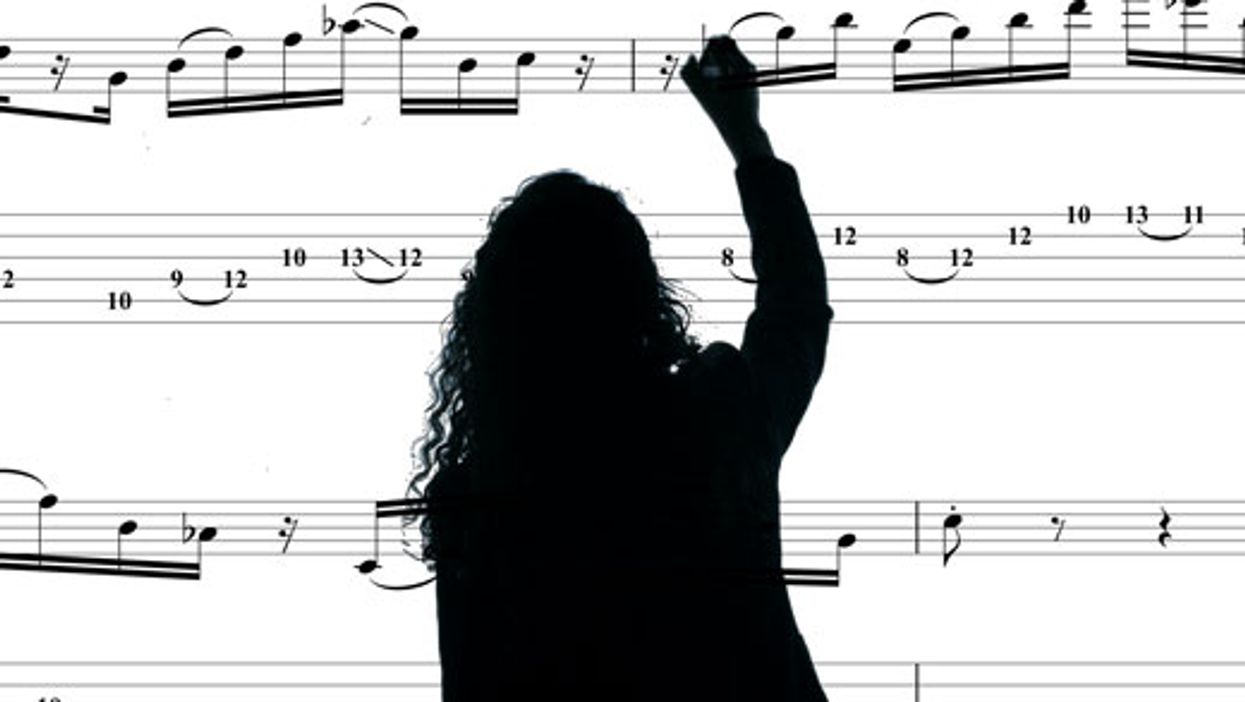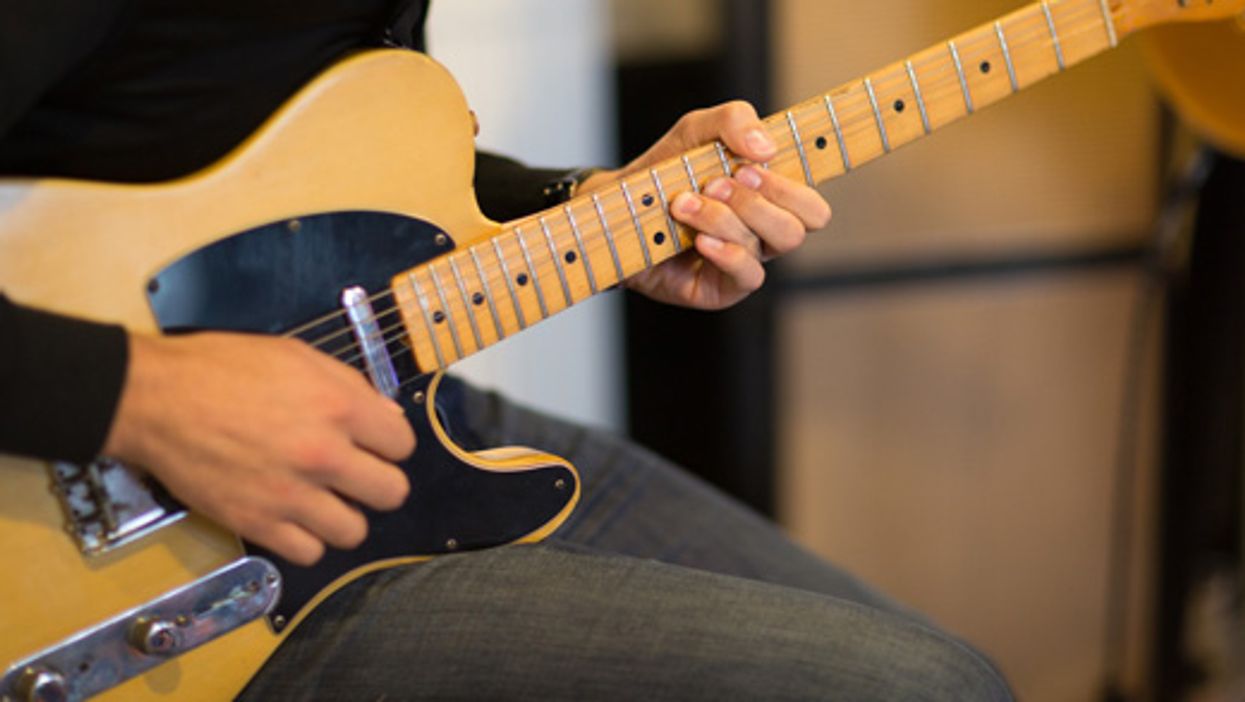| Print it! Click here to download a high-resolution, printable PDF of this lesson's notation. |
Many students ask me about my picking technique and speed. The answer is surprisingly simple. I break down large musical ideas and examples into manageable parts and practicing them over and over. The example in Fig. 1 is a common scalar pattern in C major. At first, it might be a lot to tackle all at once, so let’s break it down.
Download Figure 1 Audio: Slow - Fast
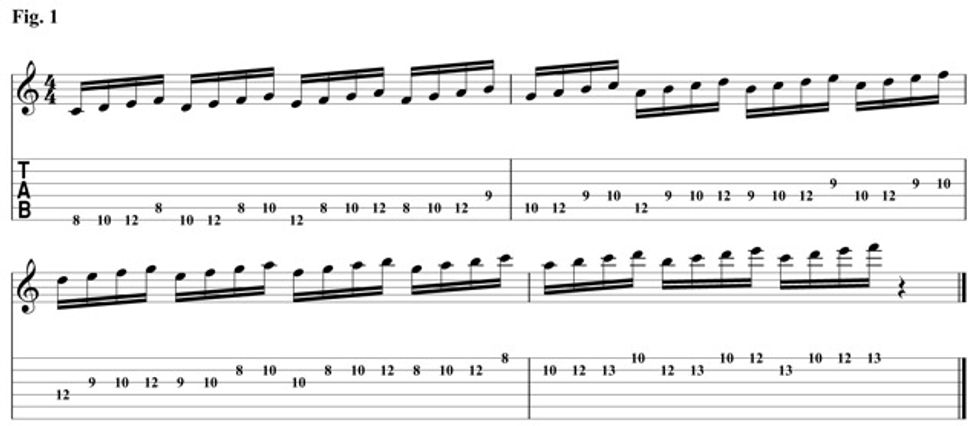
In Fig. 2A and Fig. 2B you can see two short examples from the previous figure. Both of these are essentially the same pattern with the first one ascending the scale and the second one descending. Remember, we want to use straight alternate picking throughout all of these examples. Whenever you work on technique, always practice with a metronome. It will help you keep track of your progress. In order to increase your speed over time, you will need to minimize the motion of both hands as much as possible.
Download Figure 2A Audio: Slow - Fast
Download Figure 2B Audio: Slow - Fast
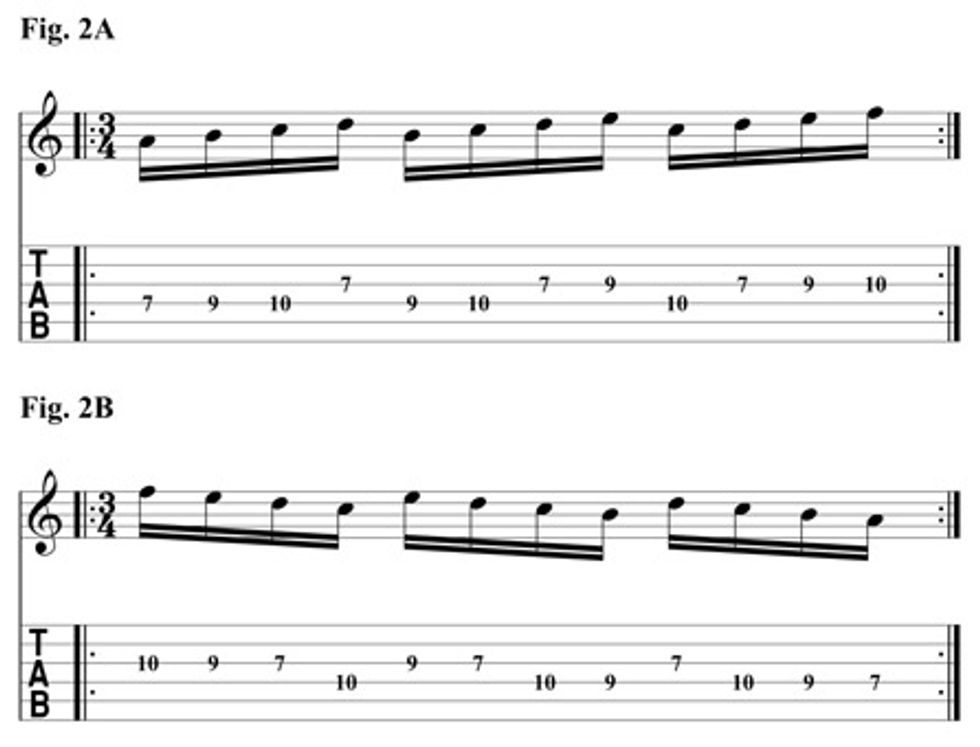
Since neither one of the examples involve position shifts, you will be able to get these together pretty quickly. But what if you need to change keys? This is where we really need to make our practice time more efficient. Instead of just running patterns as finger exercises, learn how each phrase or sequence is made. Then move that same sequence to different keys and different string combinations. I know it sounds like a lot of work—it is—but by combining both the technical and theoretical concepts you can maximize your practice time and develop a deeper understanding of the fretboard.
Fig. 3 shows a descending sequence in A minor across the 1st and 2nd strings. You can see that you will need to shift positions on beat one of each measure. Keep your alternate picking tight and start slow. Once you have a handle on the sound of the sequence, move it to other string sets.
Download Figure 3 Audio: Slow - Fast
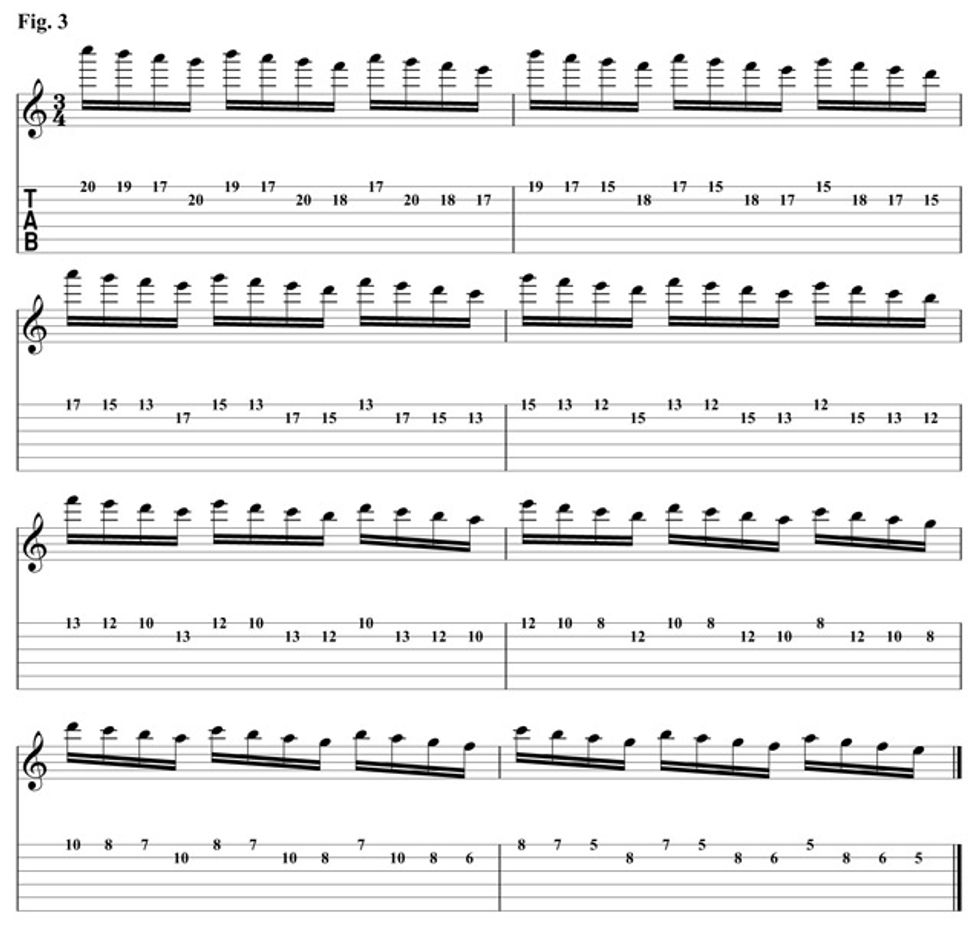
Fig. 4 is a great exercise to build up dexterity when moving across two strings. Even though it might be more comfortable to use an upstroke on the first note of beat two, keep to the strict alternate picking pattern we have been working on.
Download Figure 4 Audio: Slow - Fast
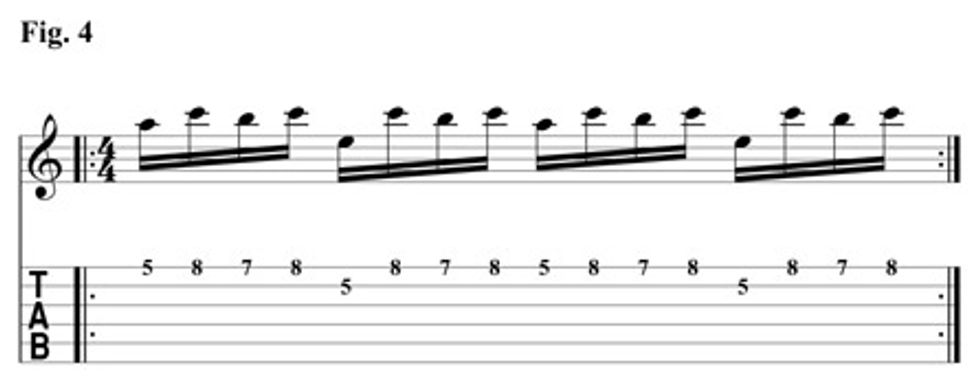
Both Fig. 5 and Fig. 6 use similar sequences, but combine the notes within the beat in a new way. In Fig. 5 we are playing five notes per beat—also know as quintuplets. Since there are an odd number of notes per beat, it has an uneasy feel that is great for building up tension.
Download Figure 5 Audio: Slow - Fast
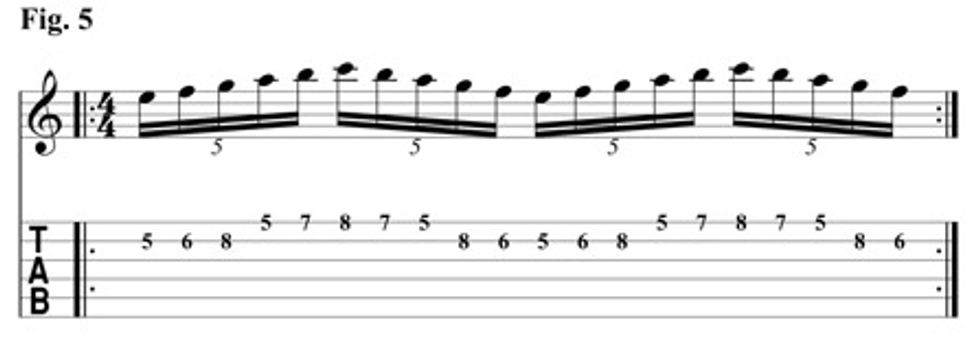
We add one note to each beat in Fig. 6. You can think of these two ways, either as sixteenth-note triplets or as sextuplets. Either way, make sure to start these at a reasonable tempo and keep your hands as relaxed as possible.
Download Figure 6 Audio: Slow - Fast
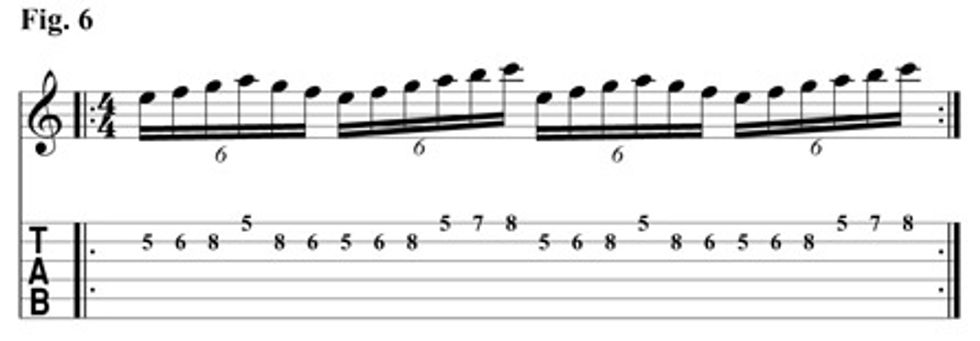
The key here is to take these patterns through different keys and string combinations. Keep track of your progress and only increase the tempo when you are feeling comfortable and your playing is accurate. These sequences and melodic patterns are also an important part of creating melodies and melodic development. They can be used to emphasize melodic high or low points, embellish melodic movement, and create smooth connections between longer melody notes.
German Schauss is a guitarist, composer, author, and educator who teaches at Berklee College of Music and the LA Music Academy. He performs and tours as the leader of his own band and with other internationally known artists. Schauss writes music for commercials, TV, and video games, and is the author of Shredding Bach and The Total Shred Guitarist. For more information, visit germanschauss.com.



